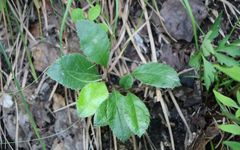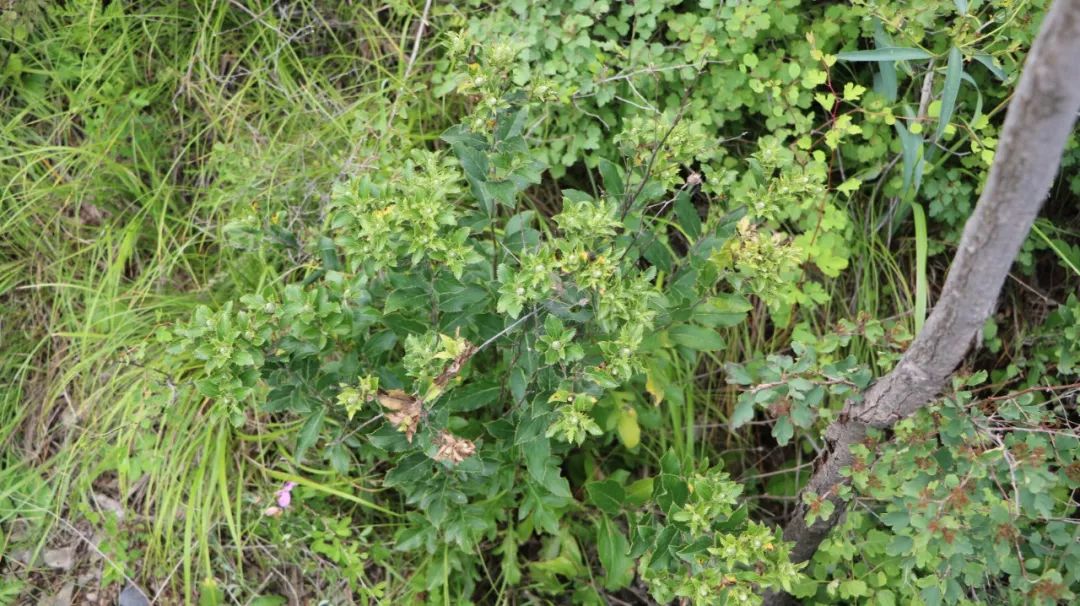
Cāngzhú (Atractylodes lancea) 生境
Cāngzhú refers to the medicinal material derived from the dried rhizomes of the Asteraceae family plants, specifically Máo cāngzhú (Atractylodes lancea) or Běi cāngzhú (Atractylodes chinensis).
Cāngzhú is a commonly used medicinal material in clinical practice. It possesses pungent and aromatic properties, effectively drying dampness, strengthening the spleen, and dispelling wind and cold, making it a key herb for addressing dampness obstructing the spleen. Therefore, many prescriptions during the current pandemic include Cāngzhú.
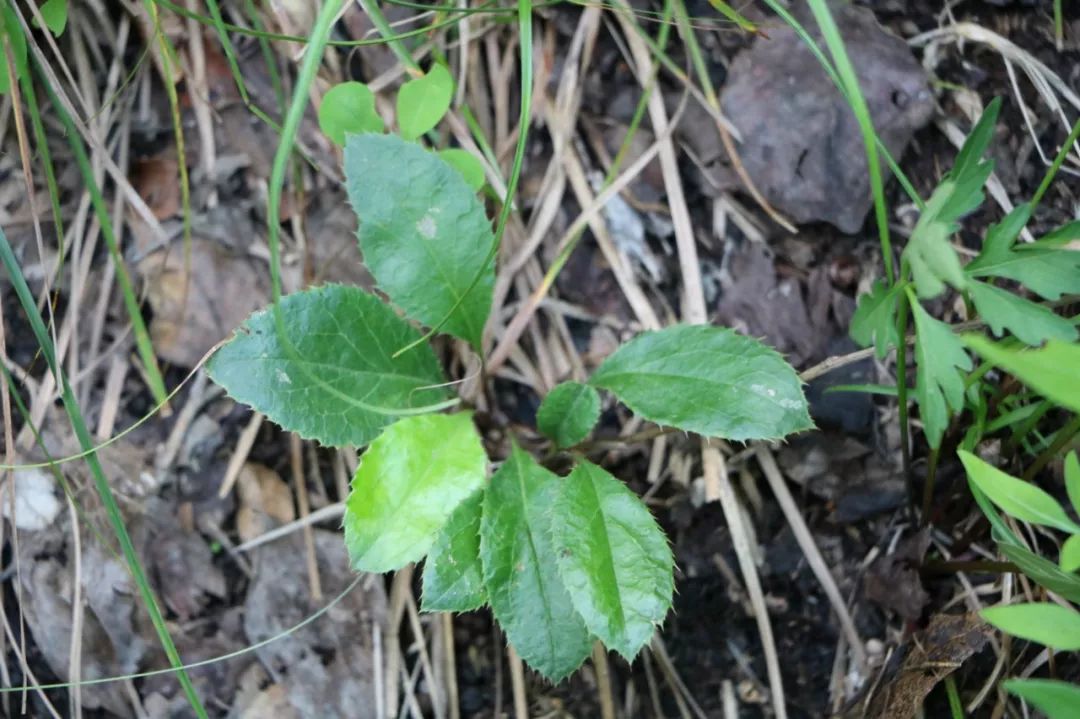
Cāngzhú幼苗期
Today, we will delve deeply into Cāngzhú. From a botanical perspective, Cāngzhú is a perennial herb belonging to the genus Atractylodes in the Asteraceae family. The classification of this genus has been historically chaotic due to transitional and unstable variations.
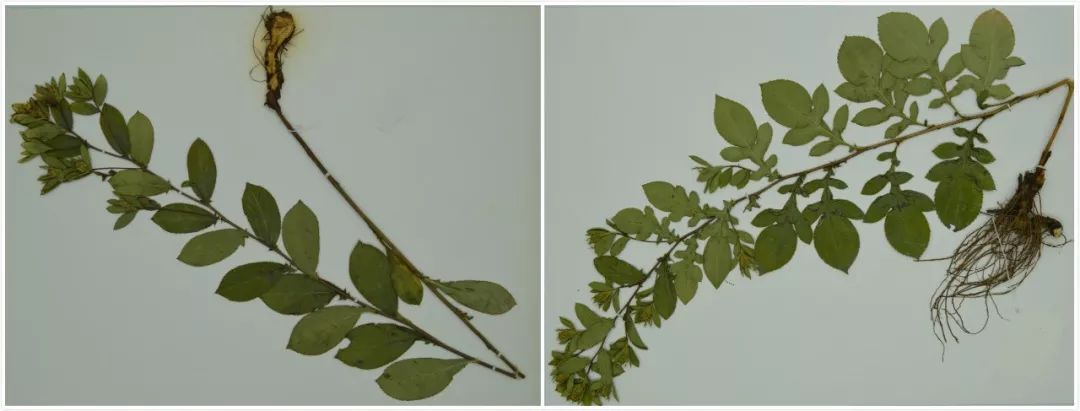
多变的Cāngzhú叶形
In China, there are primarily five species: Cāngzhú, Bái zhú, Guān cāngzhú, Cháoxiǎn cāngzhú, and
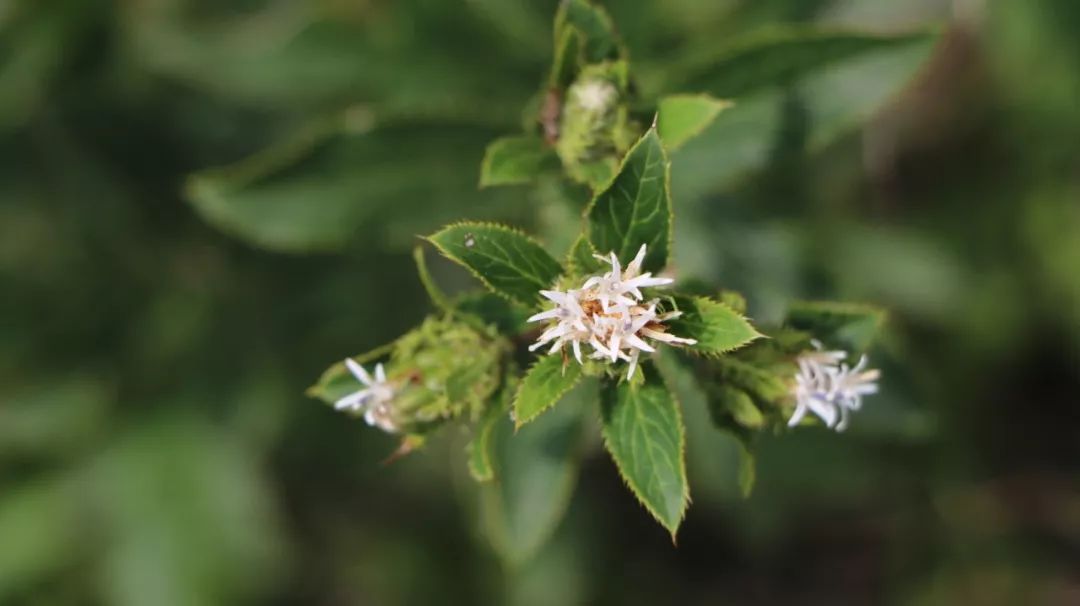
In botanical classification, Cāngzhú has a complex history. In ancient times, Cāngzhú was not distinctly named; both Bái zhú and Cāngzhú were referred to as “zhú.” The earliest recorded use of “zhú” in medicine is found in the Wǔshí’èr bìngfāng. Later, in the Liang dynasty, Táo Hóngjǐng mentioned in the Míngyī biélù that “zhú” can be divided into white (i.e., Bái zhú) and red (i.e., Cāngzhú), hence Cāngzhú is also known as Chì zhú.
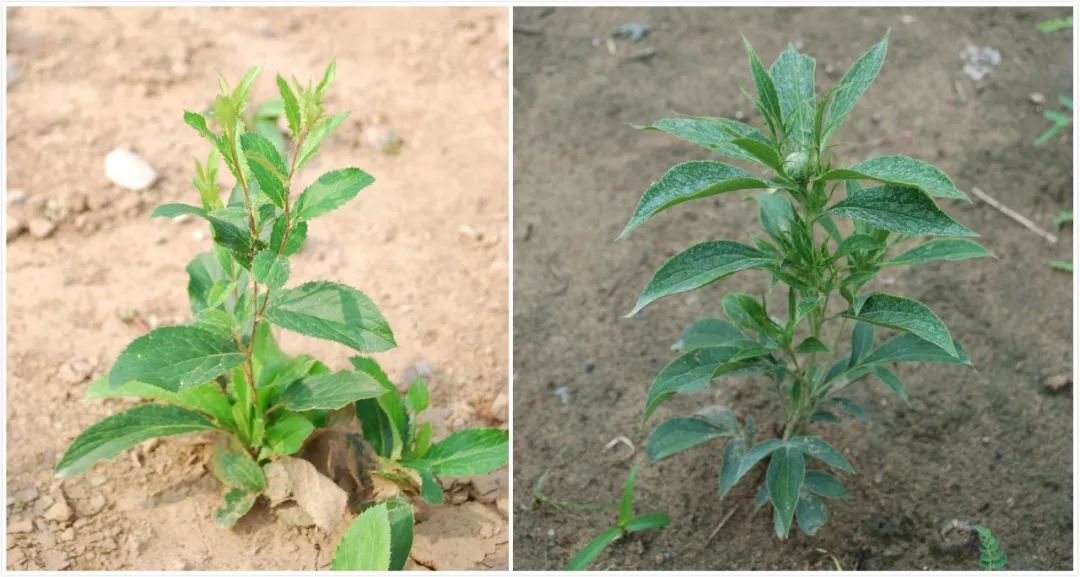
Cāngzhú (left) and Bái zhú (right) plant morphology
Regarding the earliest mention of “zhú,” historical herbal texts and current research present various interpretations. Prior to the Tang and Song dynasties, Bái zhú and Cāngzhú were often confused, leading to frequent misapplications. It was not until the Northern Song dynasty that the distinction between Cāngzhú and Bái zhú began to be emphasized, and subsequent herbalists documented them separately, clarifying the medicinal use of Cāngzhú.

Cāngzhú flowering process
For the medicinal material Cāngzhú, although classified botanically as one species, it has traditionally been sourced from two different plant origins: Máo cāngzhú (Atractylodes lancea) and Běi cāngzhú (Atractylodes chinensis). While they are similar botanically, their medicinal applications differ significantly.
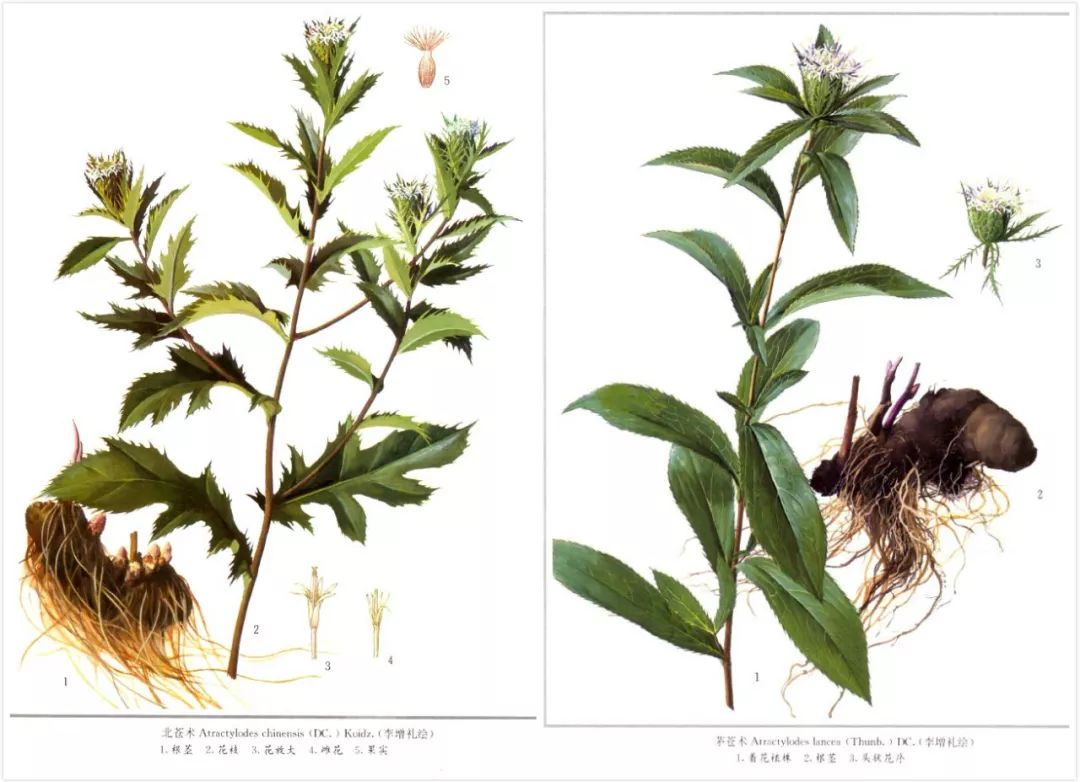
Běi cāngzhú (left) and Máo cāngzhú (right) hand-drawn
Máo cāngzhú primarily grows in the southern region, particularly around Máoshān (present-day Jūróng, Jiangsu), also known as southern Cāngzhú. It is superior in quality and efficacy compared to Běi cāngzhú, with dense oil chambers and high volatile oil content, resulting in fine needle-like crystals, hence its nickname “毛苍术” (Mao Cāngzhú). Its flavor is aromatic, slightly sweet, and then bitter and pungent, making it the highest grade of Cāngzhú medicinal material.
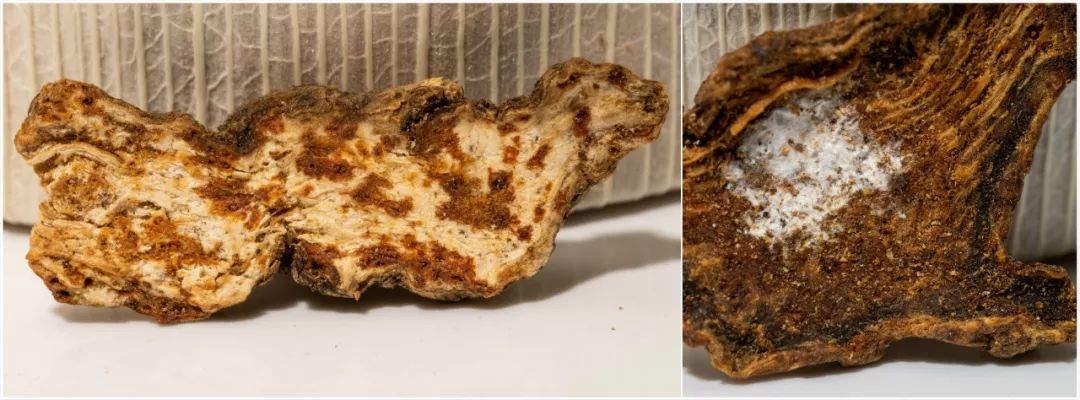
Máo cāngzhú slices, image from Teacher Wang Zeguang
However, the early destruction of local wild resources of Máo cāngzhú has led to its near extinction, making it difficult to collect corresponding specimens. Clinical use has become limited, relegating it to a mere decorative entry in the Chinese Pharmacopoeia.
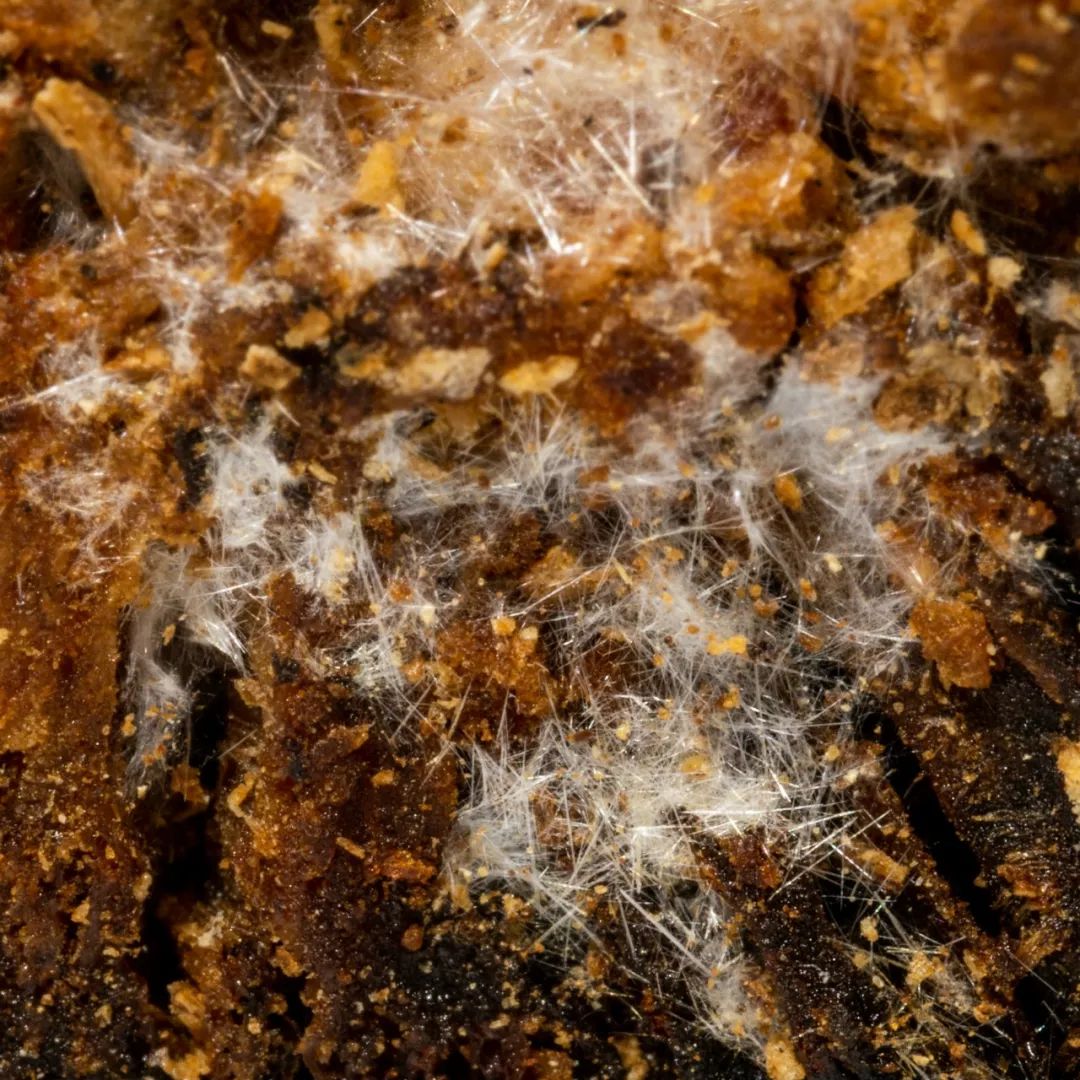
Magnified crystals of Máo cāngzhú, image from Teacher Wang Zeguang
Notably, the subspecies of Máo cāngzhú, Luótián cāngzhú, has been successfully cultivated in large quantities in Hubei’s Luotian and Yingshan counties, producing high-quality material. However, due to high cultivation costs, it is primarily exported to Japan and Korea at high prices, resulting in limited domestic use.
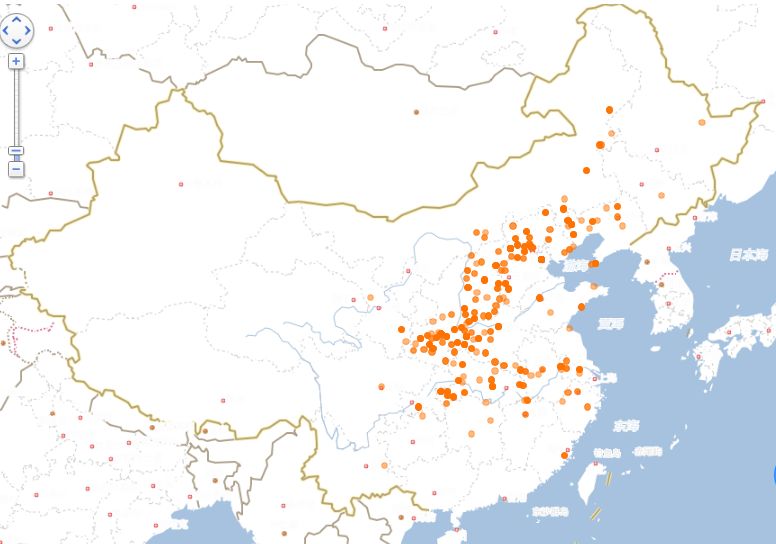
Distribution map of Cāngzhú resources
Due to its rarity, Běi cāngzhú is less valuable than Máo cāngzhú, but its wild resources are relatively abundant and of good quality. Běi cāngzhú is mainly distributed in most northern regions of China, particularly in Hebei’s Chengde and Inner Mongolia, with Chengde being the prime production area. Due to the inability to meet the demand for Máo cāngzhú, Běi cāngzhú has become the primary source of Cāngzhú used in medicine today.
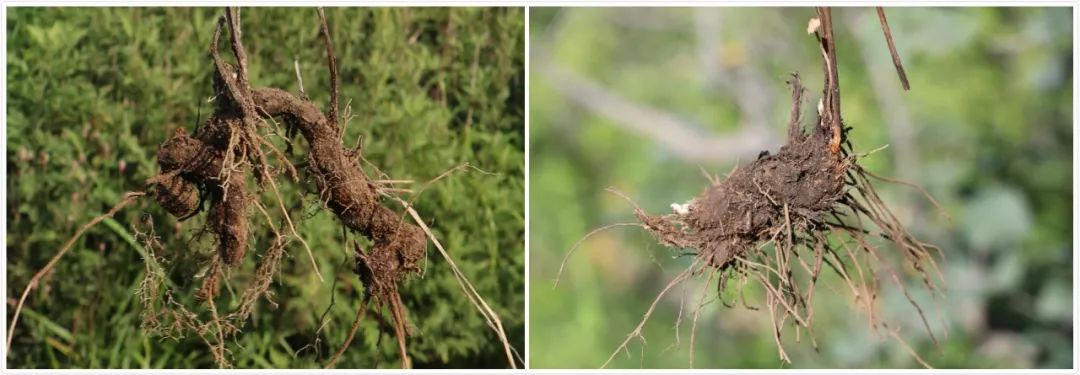
Wild Běi cāngzhú root
It is known that the cultivation history of Bái zhú is long, dating back to the Ming and Qing dynasties, while the cultivation of Cāngzhú has only emerged in recent years. Traditionally, Běi cāngzhú has been supplied to clinics as a wild product, but as wild resources diminish, the size of harvested wild Cāngzhú has decreased, leading to rising prices.
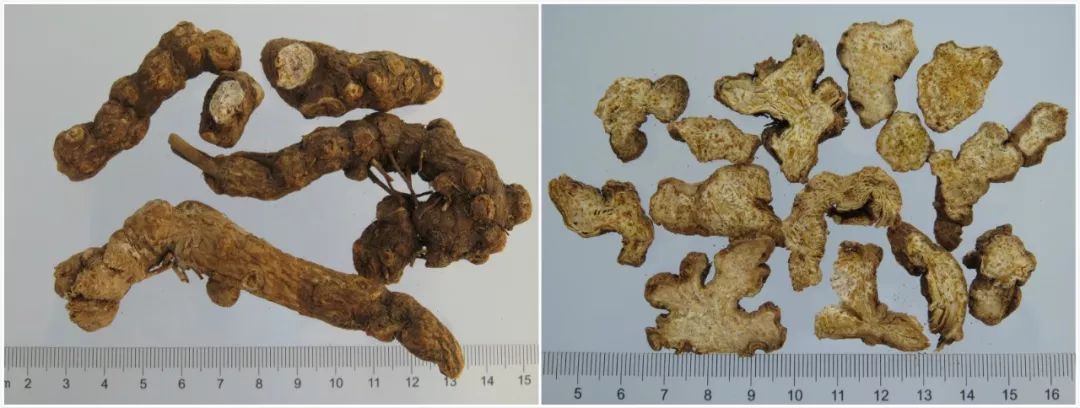
Wild Běi cāngzhú raw material and slices
Driven by profit, the cultivation of Běi cāngzhú has gradually developed in recent years. The artificial cultivation of Cāngzhú can be accurately traced back to 2012, initiated by Chengde Jingfukang Pharmaceutical Co., which began developing Cāngzhú cultivation with local farmers. In Heilongjiang, efforts have also begun to introduce cultivation, but unfortunately, many local cultivators mistakenly introduce Guān cāngzhú due to the abundance of its wild resources without professional guidance.

Seedling bed for cultivated Cāngzhú in Chengde
Currently, in Chengde, Hebei, the cultivation of Běi cāngzhú requires at least four years to produce medicinal material. Initially, the focus is on seed collection, with seeds priced at 800-1000 yuan per kilogram, yielding high profits per mu. Therefore, the cultivation of Cāngzhú as a commodity has only recently begun, indicating that future usage will likely rely primarily on cultivated sources.

Comparison of wild Cāngzhú (left) and cultivated Cāngzhú (right) medicinal materials
Thus, Cāngzhú is currently undergoing a transition from wild to cultivated sources, with wild resources being protected to some extent. Cultivated Cāngzhú meets the pharmacopoeia’s content requirements after four years of cultivation, but its cross-section is dense, which does not conform to the pharmacopoeia’s requirement for a loose texture. Companies selling slices still primarily use wild materials or mix a certain proportion of cultivated slices for sale. Only in raw material extraction enterprises is the gradual use of cultivated sources being adopted.
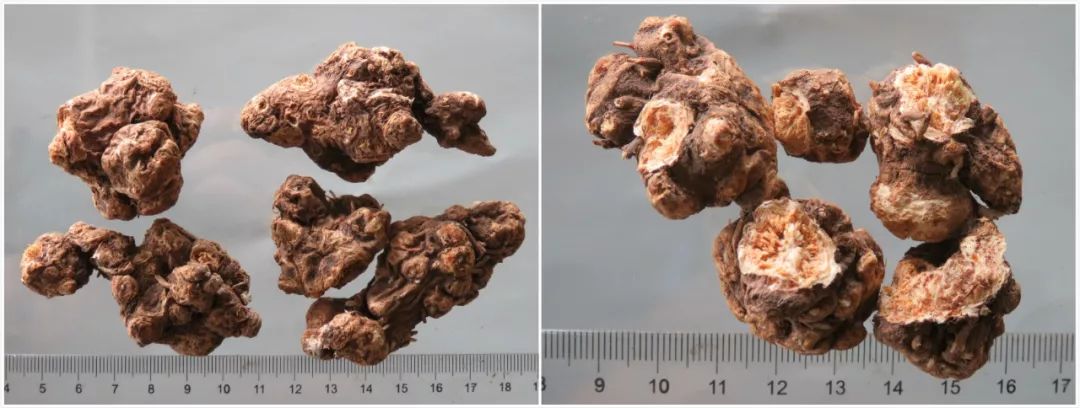
Cultivated Cāngzhú medicinal material and cross-section
Cultivated Cāngzhú differs in appearance from wild Cāngzhú, typically appearing in clumps with a dense cross-section and heavier texture. In contrast, wild products are often nodular and cylindrical, with scattered stem remnants and a loose cross-section, allowing for differentiation.
It is worth mentioning Guān cāngzhú (A.japonica Koidz.ex Kitam), named for its wild resources primarily distributed north of Shanhaiguan in Heilongjiang. Guān cāngzhú is not included in the 2015 edition of the Chinese Pharmacopoeia and is used in a few counties in Northeast China, often confused with genuine Cāngzhú. In Korea and Japan, Guān cāngzhú is used as Bái zhú. Literature indicates that Guān cāngzhú has distinct chemical components compared to genuine Máo cāngzhú and Běi cāngzhú, thus it cannot replace Cāngzhú.
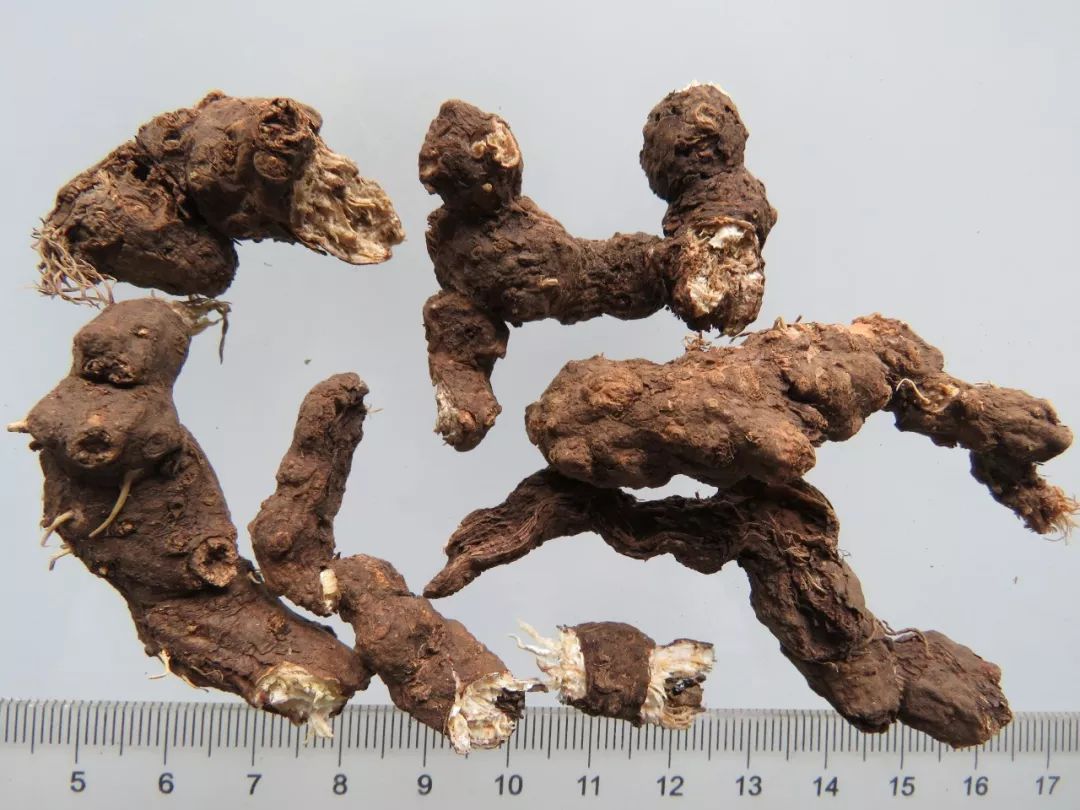
Guān cāngzhú medicinal material (unprocessed)
During times of high demand for Cāngzhú, Guān cāngzhú may sometimes be falsely sold as genuine Cāngzhú. However, Guān cāngzhú has strong fibrous texture, is lighter, and has fewer oil spots, with a milder taste. Its wild resources are relatively abundant and cheaper, leading some pharmaceutical companies to take risks by frying slices to mask the color of the cross-section, attempting to pass them off as genuine fried Cāngzhú.
▌同茂顺 来源:药用植物图鉴


